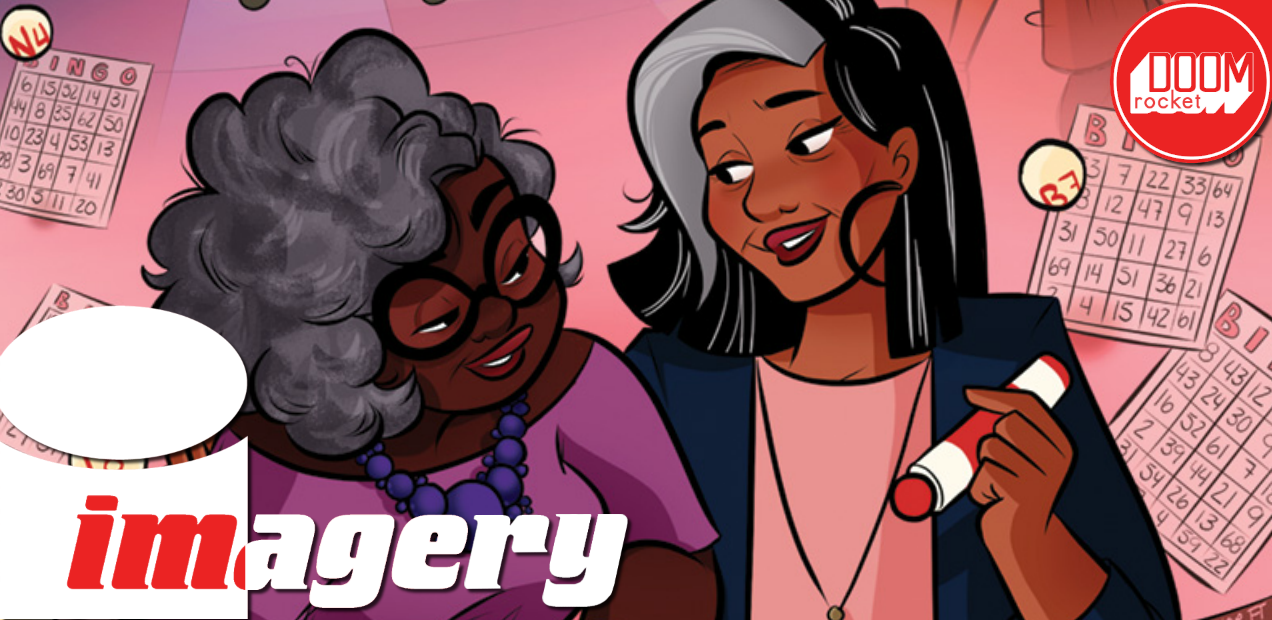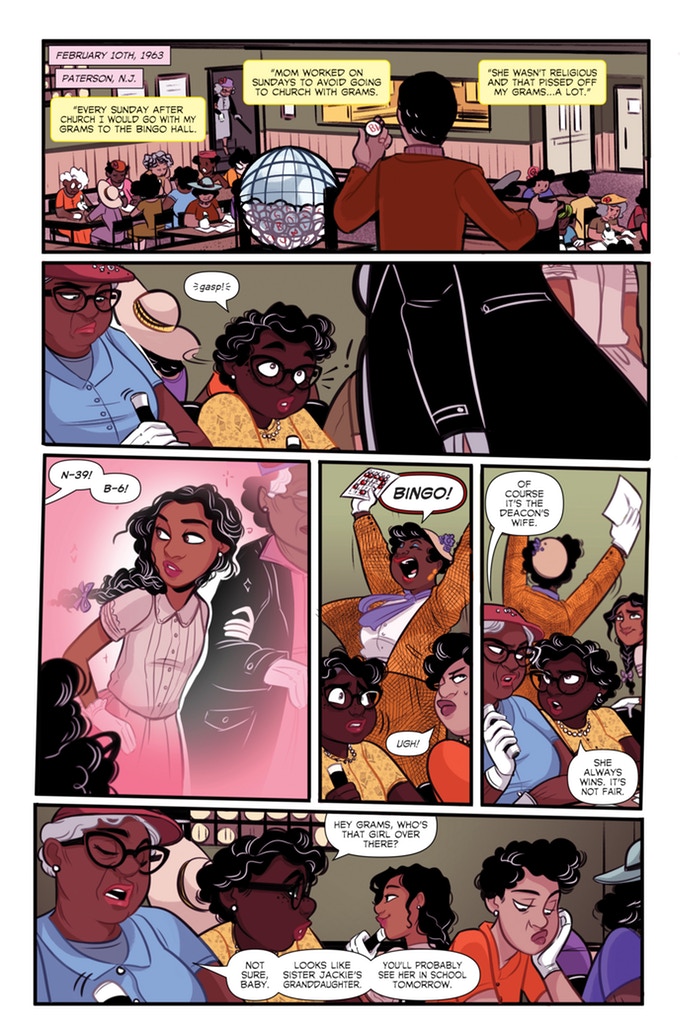By Courtney Ryan. Maybe it’s merely a time-honored tradition, or perhaps it really is the sensible way to go, but more often than not, when a budding comic reader asks for book recommendations, the go-to suggestions are often of the slice-of-life variety. I guess it mirrors the age-old debate between genre and literary fiction, though I would argue that slice-of-life is as much a genre in comics as horror, mystery, or anything else is. Plus, the comic book community’s appreciation for genre fiction is part of what sets it apart from the pretensions of other literary communities.
It could be there is an assumption that if you wanted to read about caped heroes you already would be a comic book fan, or perhaps slice-of-life comics feel more accessible since they’re perceived to lack the canonical principles that pepper so many superhero stories. Neither of these assumptions are actually true (rather, a case could be made for the reverse of both), but slice-of-life stories are still considered the safe entry into the comics universe.
And just as slice-of-life comics can be considered accessible for first-time readers, the genre has proven to be a safe playground for new and unseen characters as well. Though openly queer characters are finally depicted in other genres, such as noir thriller Virgil or vigilante caper Batwoman: Elegy, queerness is as present in the slice-of-life tradition as coming-of-age arcs and existential struggles. And thanks in part to the rise of webcomics, more independent creators are able to infuse their fresh depictions of life with black and brown characters—and connect with an audience.
There is still a long way to go in reaching balanced visibility and inclusion, but it’s less of a strife than ever before. And some creators are approaching their work by first surveying the comic landscape and asking, “Who isn’t here and what story might they tell?” That question is partially what brings us to Image’s Valentine’s Day release this year: a slice-of-life love story depicting two black grandmothers.
Written by Tee Franklin.
Art by Jenn St-Onge.
Colors by Joy San.
Letters by Cardinal Rae.
A universal romance. The story centers around Hazel Johnson, who meets Mari McCray as a teenager during a church bingo game in 1963. The two fall in love, experiencing one another as best friends until they finally work up the courage to confess their feelings after four years. Their love story is cut brutally short, though, as both families disapprove of their “perverted” affection and separate the girls immediately after they’re caught in a kiss. We then climb through the following decades—all the way to 2030—with Hazel as she marries, raises a family, meets her grandchildren, and carries a heavy torch for her first love.
Bingo Love is at its strongest when an elderly Hazel recalls her first memories of Mari and the painful, exhilarating longing and uncertainty that stirs when one becomes enchanted by another person for the first time. Hazel’s youthful recollections are pure and delightful, helping to carry a charming undertone throughout the following decades of her tale. Despite anticipating and, through the narrative, confronting our society’s ugly intolerances, the story retains a hopeful energy throughout thanks to Hazel’s sensitive candor.
The comic falters somewhat in its depiction of Mari. Even when she appears in front of us, she never leaps out from the flat figure sanctified by Hazel’s nostalgia. Like a paper doll, Mari is a flawlessly etched woman who transforms across the surface from page to page, but lacks any dimension or depth. Because Hazel is so real and her love for Mari so genuine, we have to accept that Mari is real too, though I would have enjoyed learning more about her and where she struggles as a human. Some of that could have developed naturally had we been privy to any of the couple’s conflict, as conflict helped to add nuance to Hazel’s husband, James. It’s not like an idolized version of elderly black women in love has become a stale trope in any medium, so obviously Bingo Love still captures a freshness despite missing this opportunity for character development.
A fresh voice. Author Tee Franklin has spent the last few years rattling the cages that hold some of the comic world’s archaic structures in place. A bisexual, black, and disabled activist and writer, Franklin called the comic community to be more inclusive by creating the hashtag #blackcomicsmonth and trending it among her 30k followers. The 2015 campaign helped to elevate diverse comic book characters among readers of color and eventually played a role in pushing her to create Bingo Love. She launched a Kickstarter campaign to publish the book, achieving funding in just 5 days and exceeding her $19,999 goal almost two times over.
Franklin’s promotion of Bingo Love has not only to tapped into a vast audience that craves diverse characters and storytelling, but also serves as a chance to mine that audience for fresh content. Pulling from her own desire to live openly as a queer grandmother, Franklin transformed a once unrealistic fantasy into a classic slice-of-life comic, and did so with a built-in audience in tow. What else must inevitably follow from this successful pursuit is even more exciting than the completed comic itself.
Representation starts with the creative team. Franklin recruited a diverse creative team to help achieve Hazel and Mari’s love story and has openly tagged other artists and writers to continue the work she has started. She also reported that artist Jenn St-Ong took great pains to study black women’s hair before committing to drawing it. St-Ong’s attention to detail paid off and her soft characters and subtle expressions capture the gauzy wistfulness that lives in Hazel’s mind. Delicate details, ranging from how the characters dress or decorate to what they eat, help paint a full picture of their individual expressions and shared experiences. Additionally, colorist Joy San adds warmth and dimension with rosy hues that phase through the story as Hazel drifts through life’s many seasons.
Franklin, like all creators, mostly benefits by being knitted into a larger, visionary community, but there are downsides to packing as much of that community into one piece. Bingo Love features a few disjointed moments when we as readers are suddenly dropped from the narrative flow by blunt promotions for future crossover stories. I’m all for building a larger universe and launching spinoffs by other writers from Franklin’s characters, but there are many examples in comics of how to do this without slipping off the present storyline.
Despite a few beginner’s hiccups, Bingo Love is a welcome and rewarding debut from an ambitious emerging talent. Franklin invents the world she wants to see using tools she’s scraped together during her own lived experience. She certainly hasn’t reinvented the wheel with this story, but Franklin succeeds in executing a delightfully universal tale starring characters who have been absent from comic books for too long. And she’s done it alongside an audience that’s eager to be seen and to see and embrace characters both like and unlike themselves.
7 out of 10
‘Bingo Love’ hits stores February 14.
Pre-order ‘Bingo Love’ with the Diamond Code DEC170648.
















